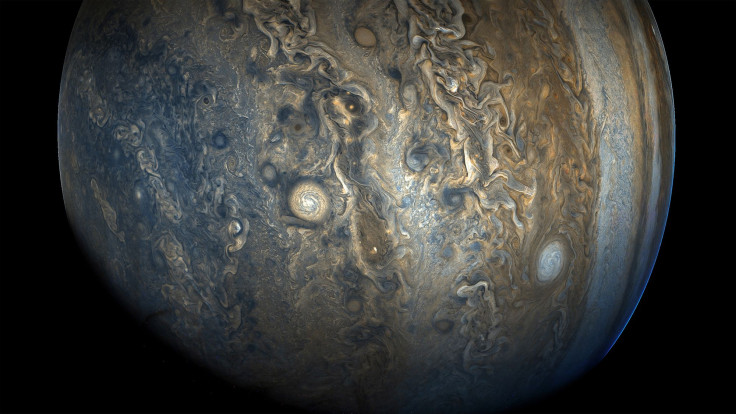Watch As Meteor Explodes On Jupiter In Rare Video

An astrophotographer was able to catch the moment when a meteor exploded in Jupiter’s atmosphere. Based on the video, the explosion was big enough to be spotted and recorded from Earth.
According to Ethan Chappel, an astrophotographer from Texas, the event on Jupiter happened on Aug. 7 at 12:07 am EDT. Around that time, Chappel had been taking photos and videos of Jupiter using his specialized camera.
After going through the images, he spotted something that appears to be a bright white flash near the lower left side of the planet, just below the equator.
“After I checked the video and saw the flash, my mind started racing,” Chappel told Science Alert. “I urgently felt the need to share it with people who would find the results useful.”
Experts believe that flash most likely came from a bolide, which is a meteor that exploded mid-air after entering the planet’s atmosphere. Earth gets pelted by bolides on a regular basis but since many of these rocks are really small, they usually just burn up in the atmosphere before reaching the ground.
Imaged Jupiter tonight. Looks awfully like an impact flash in the SEB. Happened on 2019-08-07 at 4:07 UTC. pic.twitter.com/KSis9RZrgP
— Chappel Astro (@ChappelAstro) August 7, 2019
Like Earth, it is also very common for Jupiter to get regular visits from bolides and asteroids. In fact, according to a study published in The Astronomical Journal, the rate of meteor impacts on Jupiter is around 2,000 to 8,000 greater than that of Earth.
After seeing the video, astronomer Jonti Horner of the University of Southern Queensland commended Chappel for being able to capture a rare cosmic video. Although asteroids and meteors hitting planets are very common, being able to record such an event is remarkable. He noted that there are a lot of factors in space that can prevent these kinds of events from getting spotted from Earth.
“It’s a very fleeting event, it’s a few seconds,” Horner said. “It wouldn’t be so obvious, if you were looking through the eyepiece of the telescope.”
“A lot of times these things will go unnoticed and unobserved,” he added. “Half of them will happen on the far side of the planet. So there’s a lot of things working against seeing these events.”
© Copyright IBTimes 2025. All rights reserved.





















